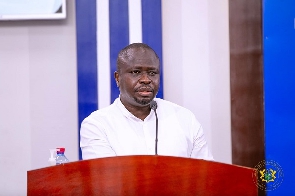The Volta Region has recorded the highest number of people migrating to other countries in search of greener pastures, the Ghana Statistical Service (GSS) has revealed.
It registered the highest out-migration rate of 27 percent, followed by the Upper West and Upper East regions with 21 percent and 20.4 percent respectively. The Eastern Region had an out- migration rate of 19.7 percent, Ahafo Region, 17.7 percent and Central Region, 17.2 percent.
Meanwhile, Greater Accra had the highest gain of migrants amongst the six regions that saw a net gain of migrants at 35.1 percent, this was contained in the 2021 Population and Housing Census (PHC) Thematic report on migration by the GSS, in collaboration with the International Organization for Migration (IOM).
Ahafo had the second highest gain with 21.2 percent, followed by Western North, 19 percent and Western Regions (17 percent. The Upper East attracted 2 percent of migrants, North East, 2.1 percent and Upper West, 3.4 percent, making the three regions the lowest gainers.
On gender migration, the report revealed that most females migrate for the purpose of marriage and family reunion, whereas males migrate for economic reasons and these migrants settle mostly in Europe and America.
The Chief Director at the Ministry of Interior, Adelaide Anno-Kumi, underscored the importance of the report’s findings, adding that the data lays out the groundwork for planning, especially regarding conditions surrounding the Sustainable Development Goals (SDGs).
“The data provides the basis for planning, implementation, monitoring and evaluating the needs of the population within the context of the Sustainable Development Goals (SDGs) 10.7.
“The Ministry of the Interior counts so much on the rich data emanating from the 2021 Population and Housing Census to address issues relating to migration in the country to move forward with our sectorial policies and programmes,” she added.
Mrs. Anno-Kumi pledged the ministry’s readiness to work hand in hand with the GSS to produce analytical reports that respond to relevant research questions on migration.
Government Statistician, Prof. Samuel Kobina Annim, in his remark, touched on the positive impact of data utilisation in line with the “leaving no one behind” sustainability development agenda. He added that it was important to include the Ghana Immigration Service and the Ministry of Arts and Culture when tackling migration data, in order to be able to correctly show the problems relating to travel and tourism.
The Chief of Mission for Ghana, Togo and Benin at IOM, Fatou Ndiaye Diallo, stated that: “Ghana requires up-to-date migration data to facilitate reporting and evidence-based policymaking as a country of origin, transit and destination. While this has been identified as a key need by the Government of Ghana through the national migration policy, the achievement of this goal has proven to be a challenge”.
“This report provides the very much-needed data to interrogate the state of play of migration in Ghana to inform the right policy engineering. Additionally, the data will support the review of the migration profile of Ghana”. Mrs. Ndiaye Diallo added.
Prof. Stephen Owusu Kwankye of the University of Ghana Regional Institute for Population Studies, in a presentation, highlighted that 30 percent of Ghanaians are classified as migrants (i.e. persons whose place of birth was different from the place of enumeration).
Business News of Thursday, 23 March 2023
Source: thebftonline.com

















